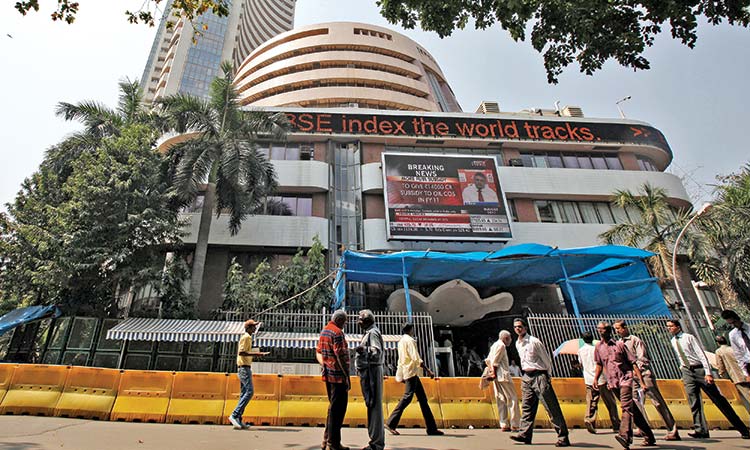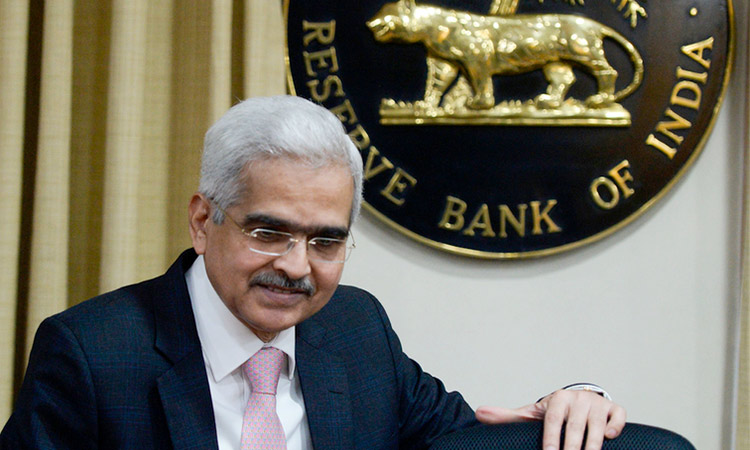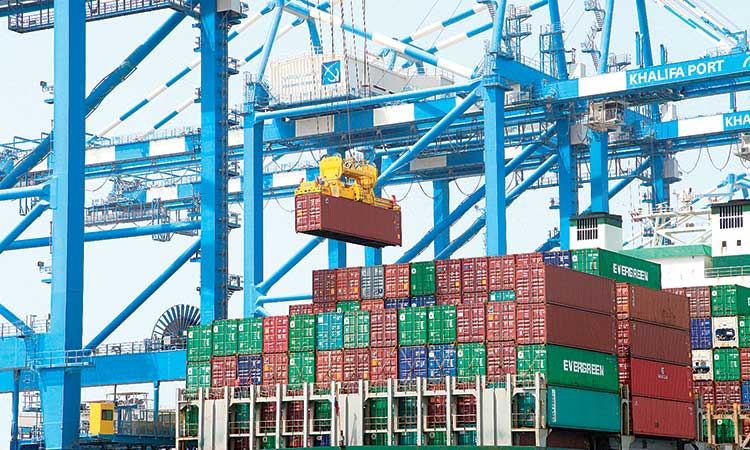Sensex and Nifty end higher on positive global cues

Commuters walk past the BSE building in Mumbai. Reuters
The BSE Sensex closed 177.51 points or 0.46 per cent higher at 38,862.23 points while the Nifty finished 67.95 points or 0.59 per cent up.
“Nifty ended on a positive note with broad-based gains post two days of consolidation supported by favourable global cues on account of progress in US-china trade talks,” said Vinod Nair, Head of Research, Geojit Financial Services.
“Mid and small caps were outperforming on account of relative value buying opportunities compared to large caps. Going ahead, investors focus will be on Q4 results season starting next week.” The top losers on Sensex were State Bank of India, Power Grid, Hero MotoCorp, NTPC and Sun Pharma, declining up to 1.5 per cent.
The gainers were Tata Steel, Vedanta, Bajaj Finance, TCS and IndusInd Bank, surging 1 to 3.5 per cent.
Meanwhile, India’s foreign exchange (forex) reserves increased by $5.23 billion during the week ended March 29, official data showed on Friday.
According to the Reserve Bank of India’s (RBI) weekly statistical supplement, the overall forex reserves rose to $411.90 billion from $406.66 billion reported for the week ended March 22.
India’s forex reserves comprise Foreign Currency Assets (FCAs), gold reserves, Special Drawing Rights (SDRs) and India’s reserve position with the International Monetary Fund (IMF).
On a weekly basis, FCAs, the largest component of the forex reserves, edged higher by $5.24 billion to $384.05 billion.
Besides the US dollar, FCAs consist of 20-30 per cent of the other major global currencies.
The RBI’s weekly data showed that the value of the country’s gold reserves was stagnant at $23.40 billion.
However, the SDR value inched lower by $3.6 million to $1.45 billion, while the country’s reserve position with the IMF slipped by $7.4 million to $2.98 billion.
The RBI is likely to adopt a more accommodative approach towards resolution of stressed assets when it issues a revised circular sometime in the next few days, against the February 12 circular quashed by the Supreme Court.
Sources said the major contention in the controversial February 12, 2018, circular that got challenged in the court leading to its quashing, will be done away with in the new circular. Instead, banks will be given more time to identify and qualify an account as bad debt and also be given more time to resolve the same.
The Reserve Bank of India is likely to retain the main contours of its February 12, 2018 circular while making the referral to National Company Law Tribunal (NCLT) non-compulsory, sources told IANS.
It might, however, be guided by suggestions earlier given by the Indian Banking Association (IBA) for debt resolution for classification of Non-Performing Asset (NPA) and resolution of bad assets.
Bankers had suggested qualifying a loan as bad debt if the default was for a period of at least 90 days and not one day as was the case in the February 12 circular.
A bank-led resolution should start only after that, according to the bankers.
Moreover, it had suggested a 60 day incubation period post this time for identifying the default. After this, banks would resolve a case within 180 days and consider referring the case to NCLT post that period if the majority of the lenders agreed.
On Tuesday, the Supreme Court struck down a February 12, 2018 circular of the RBI that asked banks to initiate insolvency process against companies even if there was a day’s delay in payment of dues.
As per the circular, banks were told to start the resolution process as soon as a borrower defaulted on a term loan and were given 180 days to cure it, failing which the account would have to be referred to the NCLT. It also said that any company that defaulted on its loan repayment obligation even by a day should be declared a defaulter.
Separately, deviating from a usual trend of tepid realty sales ahead of general elections, home sales in the first quarter (Q1) of 2019 rose by 12 per cent across seven metro cities in the country compared to the previous quarter, an Anarock report said on Friday.
Around 78,520 units were sold during the January-March period, said the report. Overall supplies also increased during the period across the cities.
“The top cities recorded new launches of around 70,490 units in Q1, 2019 (as opposed to 55,600 units in Q4, 2018), a quarterly increase of 27 per cent,” it said, adding that the rise in sale and launches “defies conventional election period trends”.
Affordable housing accounted for 44 per cent of the total new supply.
Indo-Asian News Service







